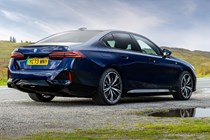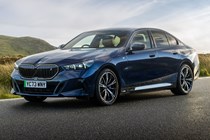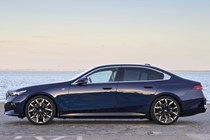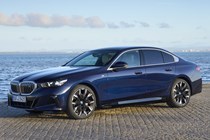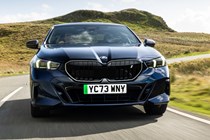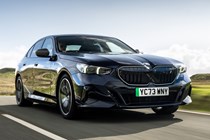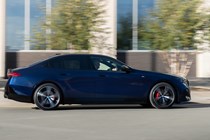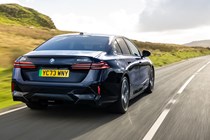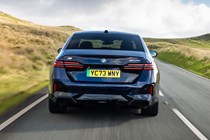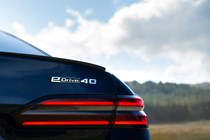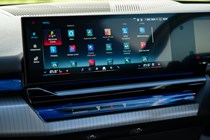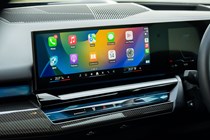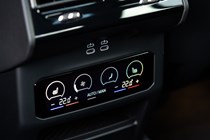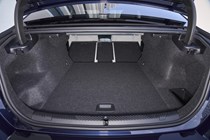
BMW i5 running costs and reliability
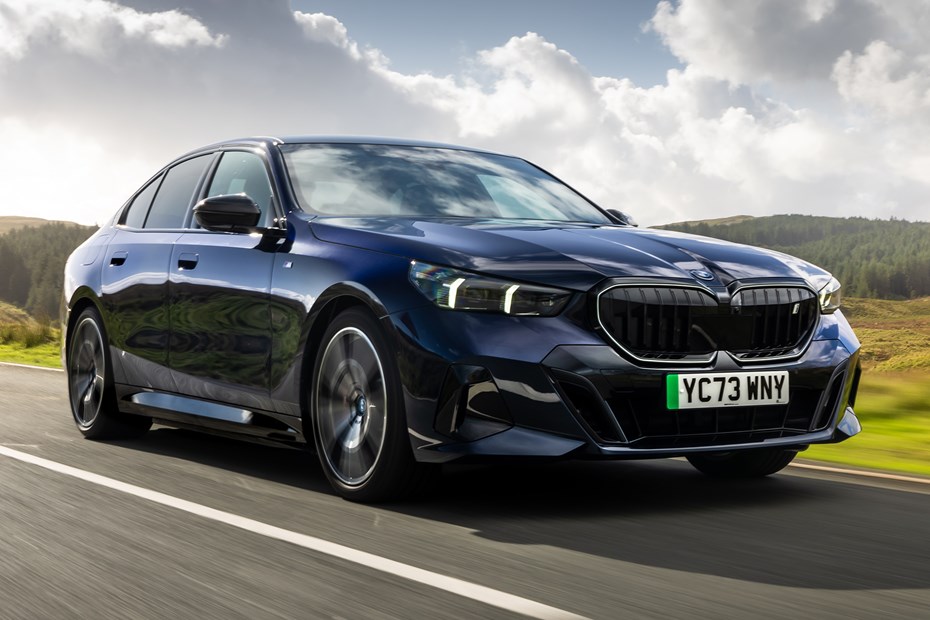
Miles per pound (mpp) ⓘ
| Electric motors, home charging | 8.8 - 11.2 mpp |
|---|---|
| Electric motors, public charging | 4.8 - 6.0 mpp |
Fuel economy ⓘ
| Electric motors | 3 - 3.8 miles/kWh |
|---|
- Just one battery option available
- Maximum claimed range of 361 miles
- But that figure seems quite optimistic
What are the running costs?
The eDrive40 is the most efficient model in the i5’s line-up. According to WLTP, it has a maximum claimed range of 357 miles. Naturally, the high-performance M60 variant is a little less frugal, offering a maximum range of 315 miles. That’s because it has an extra electric motor that places more demand on the same 81.2kWh battery pack.
We haven’t yet had the chance to run the i5’s battery flat, but our early impressions suggest BMW’s range figures are quite optimistic. The M60 model appears to have a maximum range in the high 200-mile realm – but, to be fair to BMW, we were testing the car in the depths of winter when its battery pack was at its least efficient.
Charge times vary depending on where you plug it in. Connect the car to a 7.4kW AC wallbox charger and it’ll take around 13 hours to completely replenish its battery. If you’re fortunate enough to have three-phase power at home, an 11kW AC charger can achieve the same state of charge in eight hours and 15 minutes.
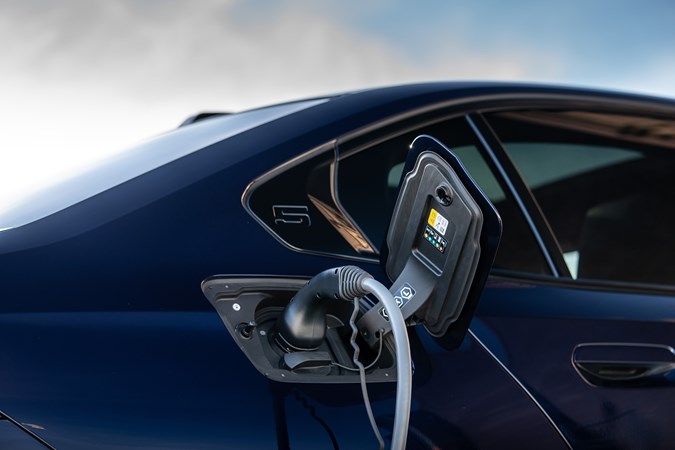
The i5 also supports DC charging speeds of up to 205kW, which is faster than the 150kW charging available on the Mercedes EQE. Find a charger that can put out the maximum speed the i5 can accept and you’ll be able to thrash its battery from 10–80% capacity in just 30 minutes.
However, BMW obviously knew that not every EV charging station can supply that amount of power, so it stepped the i5’s charging speeds in increments to suit the charging network. So, a 10–80% charge from a 100kW DC rapid charger takes 41 minutes, while the same state of charge from a 50kW charger takes 73 minutes.
Servicing and warranty
BMW can sell you a couple of service plans for the i5. The first, called BMW Service Inclusive, is paid for in one lump sum and covers the cost of your car’s maintenance for the first four years it’s on the road. BMW also offers a monthly service subscription plan.
Every new BMW is delivered with a three-year unlimited mileage warranty. The mileage allowance is generous, but the length of the warranty is a little stingy compared to the seven-year warranty you get with a Kia EV6 or the 10-year warranty available with the Toyota bZ4X. The i5’s battery pack is also warrantied for eight years or 100,000 miles from the date of the car’s registration.
Reliability
The i5 is a very new car, so we’re still unsure about how reliable it’ll prove to be. However, BMW’s other electric cars have set a strong precedent. Both the i4 and the i7 proved to be dependable during their first year on sale – and we’re expecting more of the same from the i5.
Build quality is excellent overall and, because there are far fewer moving parts in an electric car, there’s a lot less to go wrong mechanically. We’ll keep our eyes peeled in the coming months for any software glitches or infotainment issues.
Ongoing running costs
| Road tax | £0 |
|---|---|
| Insurance group | 43 - 49 |
Get an insurance quote with

|
|



